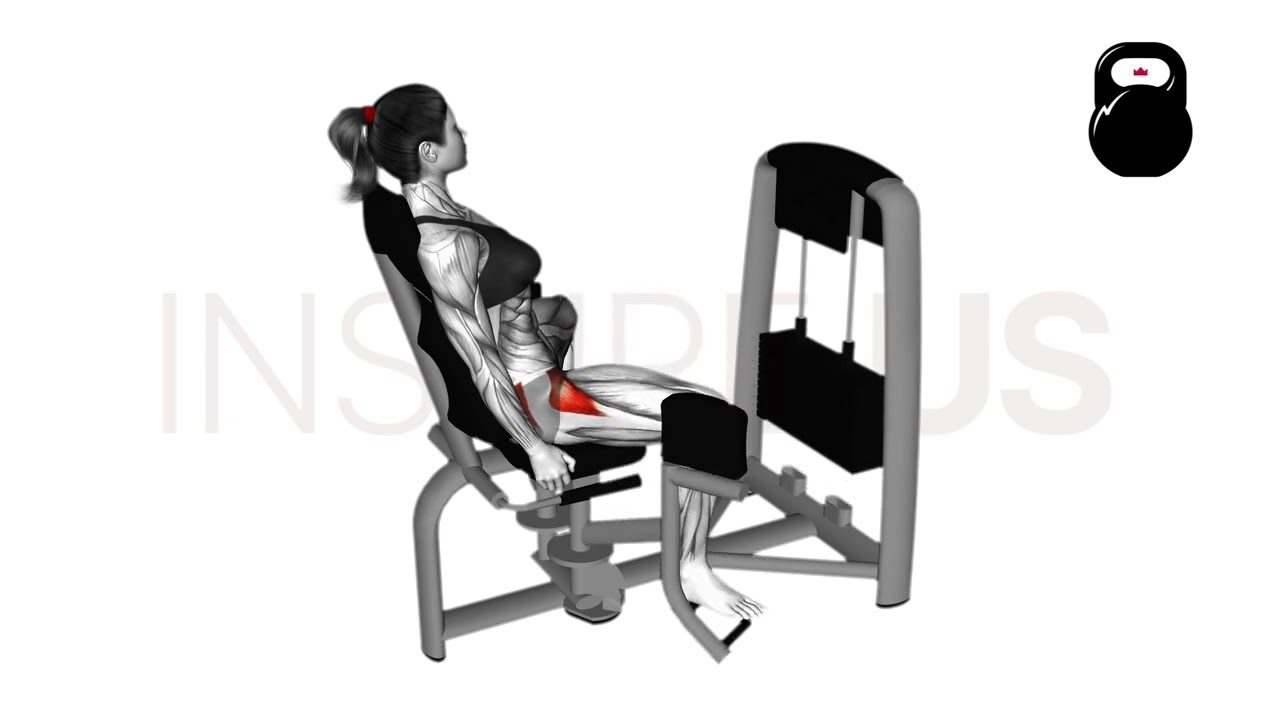Machine Seated Hip Abduction: Benefits, Muscles Worked, and More
The seated hip abduction machine is a novice-friendly isolation exercise that may be used for developing mass in the glutes, correcting issues relating to hip abduction or even improving directional force output in the entire lower body.
What is the Machine Seated Hip Abduction Exercise?
Machine seated hip abductions are an open chain machine-based exercise meant to isolate the lower body muscles directly responsible for abduction (away from midline) of the legs.
Due to the nature of the machine and the exercise itself, seated hip abductions are considered to be quite low intensity and unlikely to result in injury, even in sets of rather high volume. This makes them excellent as an accessory movement in a wide variety of different training programs.
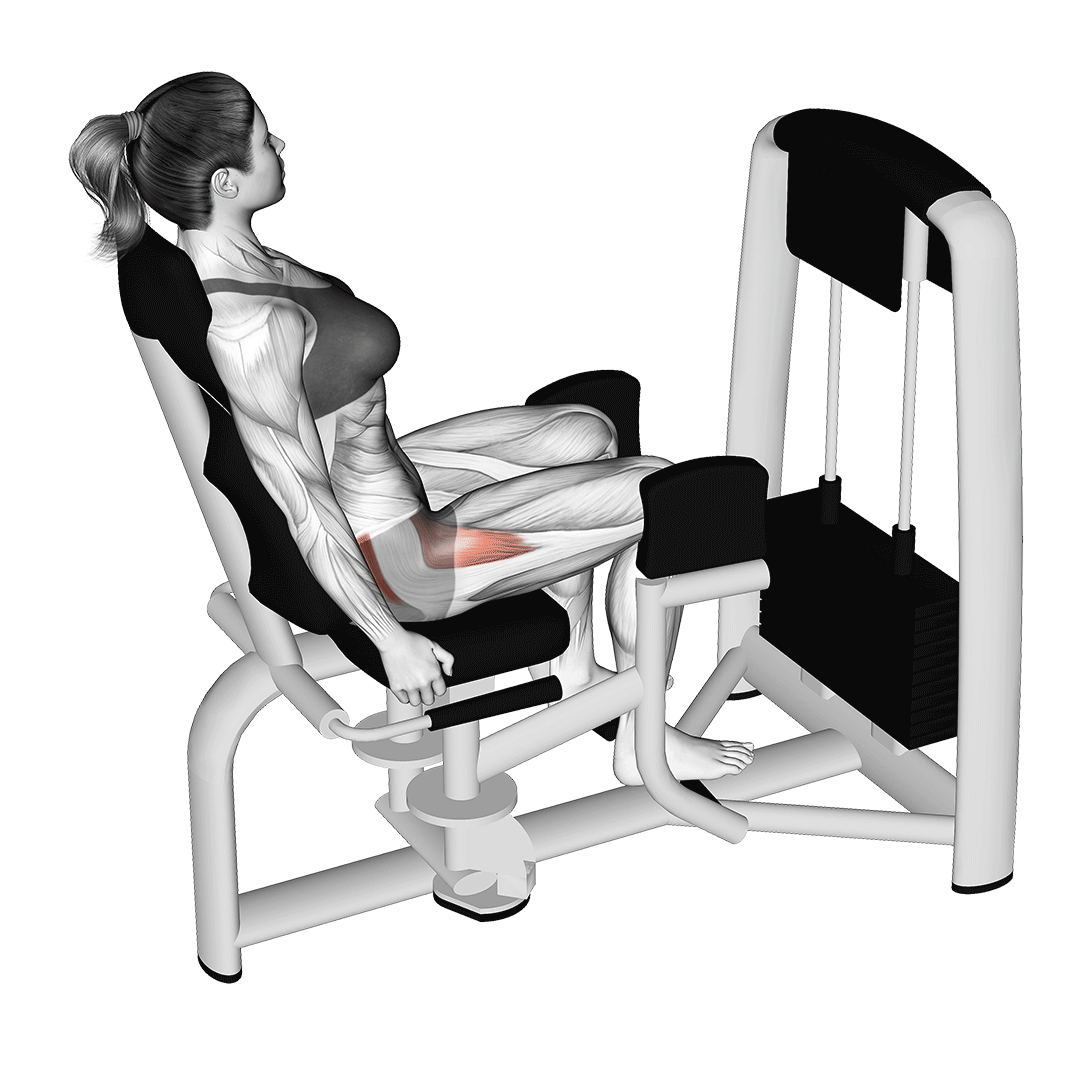
Because of the similarity of their names, lifters may confuse the hip adduction exercise with the hip abduction exercise. Hip abduction specifically refers to movement of the femur within the hip joint in a direction away from the centerline of the body - in the case of this exercise, that being laterally to the side.
Hip adduction, on the other hand, will involve moving the legs inwards towards one another. The two exercises are not interchangeable, and serve distinctly different purposes.
Are Machine Hip Abductions Right for You?
Machine hip abductions are low impact and generally easy to use. As such, they are appropriate for even complete beginners at resistance training.
However, individuals with a history of injury to the hips or groin area may wish to first speak to a medical professional, as the strain inherent to performing seated hip abductions may cause a resurgence of symptoms.
How to do Seated Hip Abductions
To perform a repetition of seated machine hip abductions, the lifter should seat themselves securely within the machine, adjusting it so that the pads are pressed against the outer side of their thighs as the majority of the upper leg rests off the seat.
The majority of hip abduction machines will feature a pair of handles at either side that will aid in properly isolating the glutes and stabilizing the body. If present, the lifter should also grip these as well.
Then, contracting the glutes, the lifter presses their legs against the pads and rotates them out to the sides until a full range of motion has been reached.
Once the legs are fully abducted out to the sides, the lifter slowly releases tension in their glutes as they allow the resistance of the machine to carefully push their legs back together.
When back in the original position, the repetition is considered to be complete.
What Muscles Does the Seated Hip Abduction Machine Work?
Though the seated hip abduction machine is largely considered to be an isolation exercise of the glutes, this is not entirely accurate. Apart from targeting the gluteus medius and gluteus minimus muscles, the tensor fascia latae muscle that aids with abduction of the legs is also targeted as well.
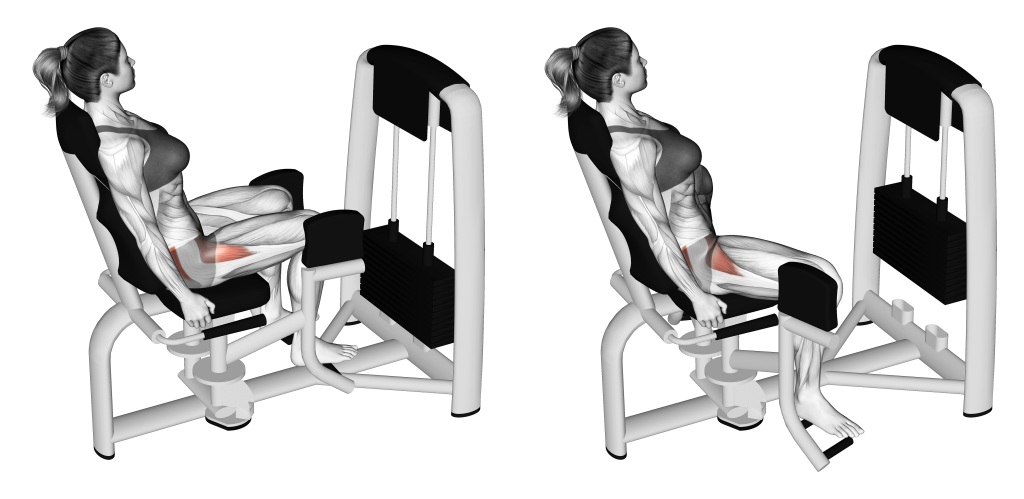
Each of these muscles is considered to be a part of the “hip abductors” muscle group - of which are targeted both to a full range and with a unique angle of resistance during machine hip abductions.
Of course, alongside these is the gluteus maximus. However, the gluteus maximus will largely be targeted to a secondary degree, favoring the other two glute muscles instead.
What are the Benefits of Using the Seated Hip Abduction Machine?
The seated hip abduction machine offers quite a number of benefits, the majority of which have to do with specifically strengthening and building the hip abductor muscles.
Builds Mass, Stability and Strength in the Lateral and Deep Portions of the Glutes
Few exercises actually isolate the gluteus medius and minimus in the same manner as the seated hip abduction machine. This provides a unique opportunity for developing strength and stability in these areas - while also simultaneously helping develop the appearance of muscular hips and glutes.
Because of the exercise’s large range of motion and rather narrow muscular recruitment set, the only limiting factor to training the hip abductor muscles will be the muscles themselves, allowing for maximal training volume.
Greater strength and stability in the hip abductor muscles equates to an easier time executing movements like walking, barbell back squats and activities involving general hip abduction as a whole.
Reinforces Leg Abduction Mechanic
Because the seated hip abduction targets the hip abductor muscles, it comes as no surprise that regularly performing the exercise reinforces the lifter’s execution of hip abduction itself.

Apart from being more stable and having a greater capacity to create force during leg abduction, lifters will find that they are able to better consciously execute hip abduction as a whole - and that they can do so to a wider range without suffering from stability issues.
Reinforcing leg or hip abduction is vital for any sort of activity involving the lower body, be it performing staple lower body exercises, daily physical tasks or for the purposes of rehabilitation.
Corrects Mechanic-Specific Issues in Other Exercises
Occasionally, issues like knee valgus during squats or difficulty maintaining the starting stance in deadlifts can be caused by weak and inflexible hip abductor muscles. Many issues in stance or execution are directly caused by problems related to the hip abductor muscles.
In cases where no underlying condition is present, using the seated hip abduction machine can help correct these issues and allow the lifter to better perform other exercises suffering from said issues.
Low Impact, Simple and Entirely Accessible to Novices
Like many other forms of machine-based exercise, seated hip abductions are an excellent option as far as minimizing impact to the joints and exercise complexity go.
Those who find movements like the back squat or other glute-focused movements too strenuous on the body can use the hip abduction machine to still train their glutes without the inherent discomfort or strain of the former exercises.
In addition to such individuals, a low risk of injury and general simplicity of technique also mean that novices to resistance training will find seated hip abductions to be perfectly accessible - so long as they have an actual hip abduction machine at their gym.
Can be Adjusted for Targeting Different Hip Abductor Muscles
Although the main muscles recruited remain much the same, the majority of seated hip abduction machines allow for the adjustment of the seat position and back rest angle for greater comfort and specificity.
By adjusting the back pad at a more incline angle, greater emphasis on the gluteus medius muscle can be achieved.
Likewise, leaning the torso more upright or even slightly forwards allows for the gluteus maximus to play an ever so slightly more important role during the movement.
Furthermore, particularly tall lifters who have difficulty hanging their legs off the seat can try adjusting it further back so that their glutes are better positioned atop the pad.
Common Seated Hip Abduction Mistakes
Seated hip abductions are only as effective as the lifter allows them to be. To get the most out of your workout, avoid the following common mistakes.
Poor Range of Motion
One of the most important aspects of seated hip abductions to optimize is the range of motion involved.
Failing to abduct your legs as far as possible can alienate certain muscles from the exercise - especially during the end range where the deep glute muscles may only be partially contracted.
To prevent the development of imbalances, sticking points and to ensure that the hip abductors are trained correctly; perform each repetition from start to maximum ROM.
The legs should be nearly touching together at the start of the repetition, and the apex of the movement should involve the legs being splayed to the limit of your mobility. This will vary between individuals, and should be gauged on an individual basis.
Rapid Eccentric
Although a rapid concentric (opening the legs) phase isn’t quite optimal, it is rapidly closing the legs back together during the eccentric that will rob the abductors of the most development.
Studies consistently show that a slow and controlled eccentric is more likely to result in muscular hypertrophy and stability development. As such, adducting the legs too quickly at the latter half of the movement will result in a less effective exercise as a whole.
Aim to stretch out each phase of the movement out to at least 2 seconds, especially when closing the legs back together. Doing so will not only ensure the exercise is effective, but also help prevent injuries related to excessive momentum.
Incorrect Back Pad Angle
Although less of an issue than other entries in this list, setting the back pad to the incorrect angle can cause issues in stance and potentially emphasize the wrong muscle groups.
Depending on what specific gluteal muscle you intend to target, adopting a more upright stance allows for greater emphasis on the deep glutes, whereas a more backward torso orientation targets the more superficial gluteal maximus to a greater degree.
Arching the Lower Back
While seated hip abductions are undoubtedly a safe exercise, arching the lower back as you perform them can greatly increase the risk of injury involved.
Not only will doing so create lengthen the hip abductor muscles to the point of excessive tension, but it will also cause the wrong muscles to be targeted and even potentially injure the lower back itself.
Aim to keep the core lightly contracted and the lower back flat against the pad as the entire set is performed. This will largely eliminate any risk of lower back arching.
However, if you still find yourself arching the lower back as you perform seated hip abductions, it is possible an inflexibility issue is present somewhere around the pelvis or spinal erector muscles. Perform posterior chain mobility exercises and speak to a physical therapist.
Alternatives to Machine Seated Hip Abductions
If no hip abduction machine is present in your gym - or you want to further challenge your hip abductors - try the following similar alternatives out.
Standing Resistance Band Leg Abduction
The standing banded leg abduction exercise is perhaps the closest alternative to the hip abduction machine.
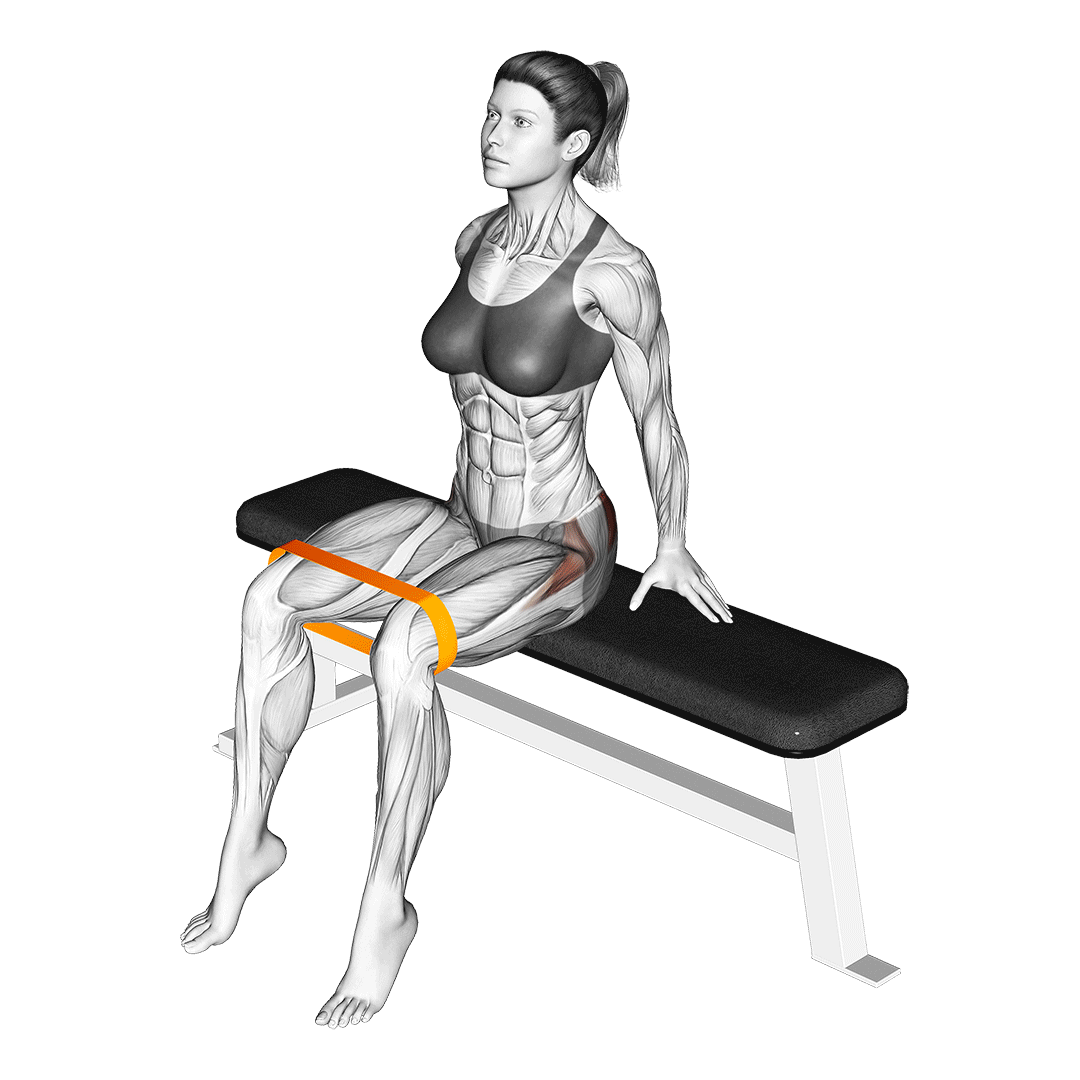
However, rather than being a bilateral machine-based exercise, banded leg abductions primarily target one side of the body at a time, and feature an uneven distribution of resistance throughout the range of motion.
Not only does this provide the benefit of more focused and higher quality muscular contraction, but the fact that the resistance ramps up as the leg reaches the terminal point of its abduction ROM means that greater emphasis on the lesser trained hip abductor muscles is present.
Use standing banded leg abductions if no machine is present, as a rehabilitative alternative or if you wish to adopt a unilateral substitute.
Goblet Side Squats/Goblet Lateral Squats
Goblet lateral squats are a compound free weight movement targeting the hip abductor muscles alongside other muscles like the quadriceps, hamstrings and gluteus maximus.
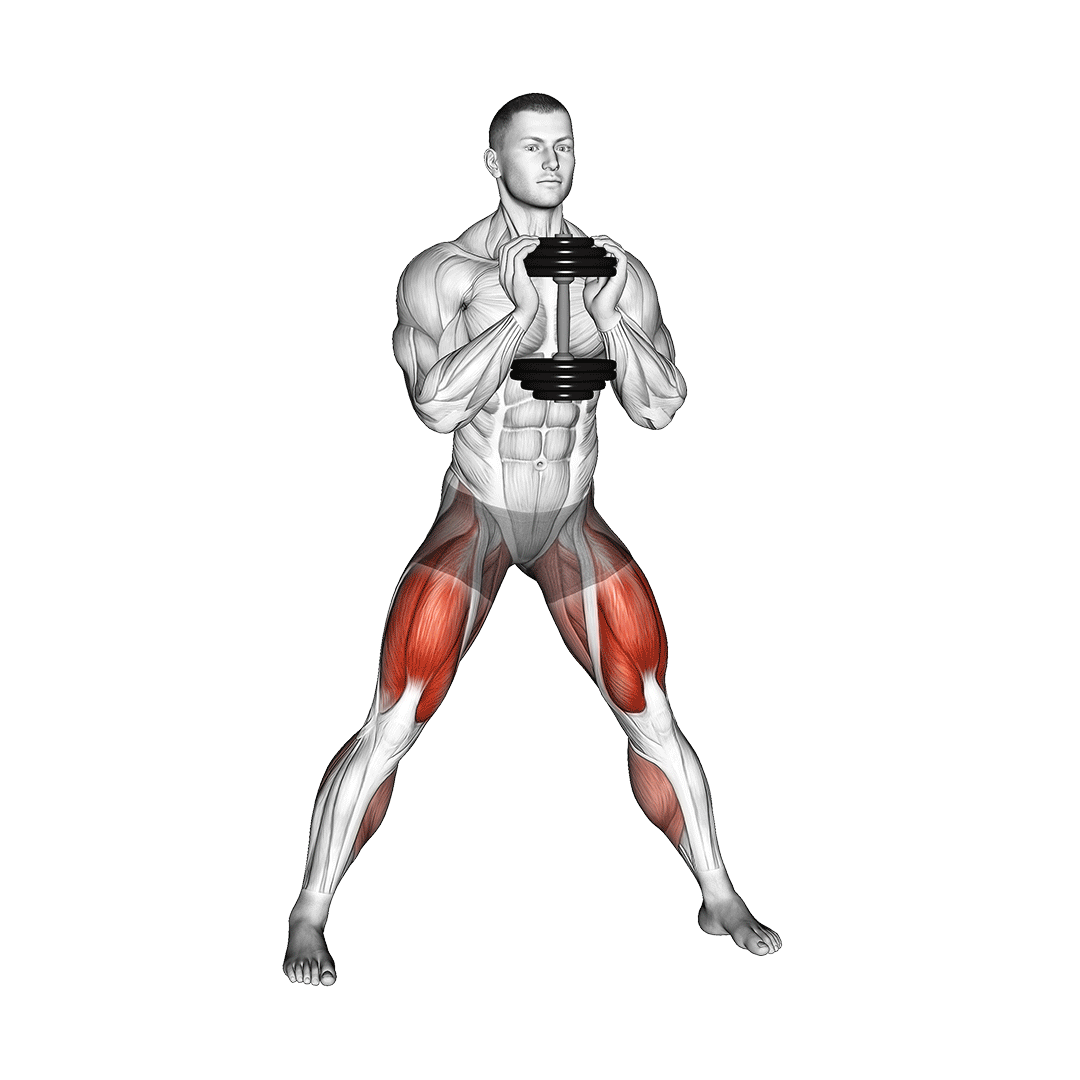
As a seated hip abduction substitute, the side squat is most effective when seeking greater overall intensity, if you find that your program lacks a primary compound movement or if you truly wish to maximize loading on the gluteal muscles.
Banded Side Lunges/Lateral Band Lunges
Banded side lunges are a similar substitute to banded leg abductions, only with a greater involvement of the quadriceps due to the larger range of motion that the knee joint is moved through.
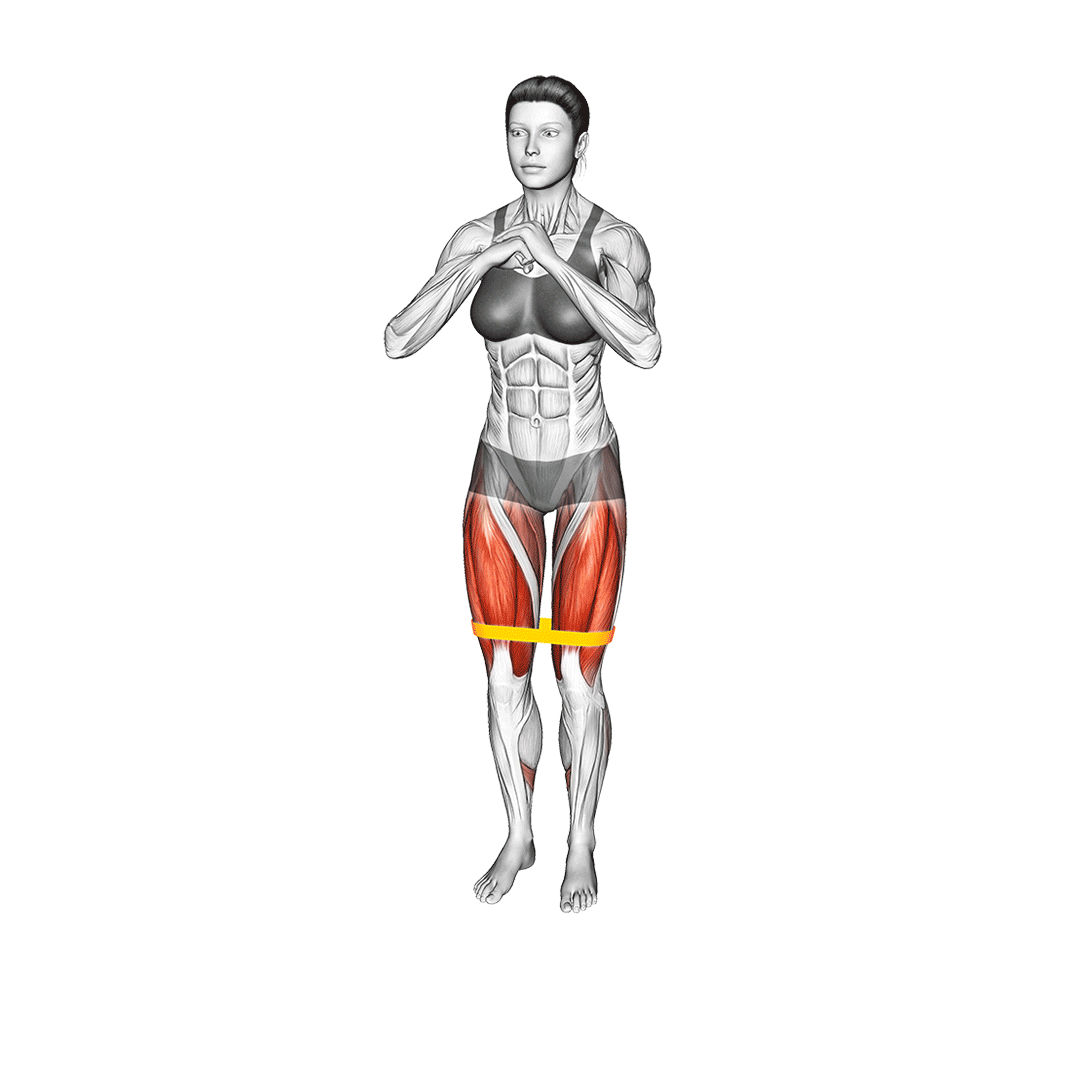
This creates a substitute that is both more intense and compound in nature, allowing for the seated hip abduction exercise to be replaced for the purposes of intensity, efficiency or greater specificity to certain activities and sports.
Frequently Asked Questions (FAQ)
Will Hip Abductions Widen the Hips?
Not necessarily. Although hip abductions do indeed target muscles that connect (in part) to the sides of the pelvis, they are unlikely to develop to a size large enough to create a noticeable difference in hip dimensions.
For a more aesthetically pleasing hip appearance, aim to shrink the size of the waist, train the entire gluteal muscle group and strive to achieve a more optimal percentage of body fat.
Does Machine Hip Abductions Make the Glutes Bigger?
Yes - machine hip abductions target the gluteus medius and minimus.
These two muscles make up the deeper sections of the entire gluteal muscle group, and will aid in creating a more muscular and well-rounded appearance to the glutes - as well as help “push out” the larger gluteus maximus muscle.
Will the Machine Seated Hip Abduction Make My Thighs Smaller?
Unfortunately, it is unlikely that machine seated hip abductions will make your thighs smaller.
When seeking a slimmer waist or thinner legs, you’ll want to be aiming for less body fat as it is this kind of tissue that contributes the most to the size of these areas. The targeted muscular recruitment seen in hip abductions is more for building up muscle mass, and will only burn a miniscule amount of calories at most.
If you truly wish to have smaller thighs, aim to perform aerobic exercise alongside your usual strength training routine, and ensure that you are in a minor or moderate (200-500) caloric deficit.
References
1. Macadam P, Cronin J, Contreras B. AN EXAMINATION OF THE GLUTEAL MUSCLE ACTIVITY ASSOCIATED WITH DYNAMIC HIP ABDUCTION AND HIP EXTERNAL ROTATION EXERCISE: A SYSTEMATIC REVIEW. Int J Sports Phys Ther. 2015 Oct;10(5):573-91. PMID: 26491608; PMCID: PMC4595911.
2. Worrell TW Karst G Adamczyk D, et al. Influence of joint position on electromyographic and torque generation during maximal voluntary isometric contractions of the hamstrings and gluteus maximus muscles. J Orthop Sports Phys Ther. 2001;31:730‐740.

